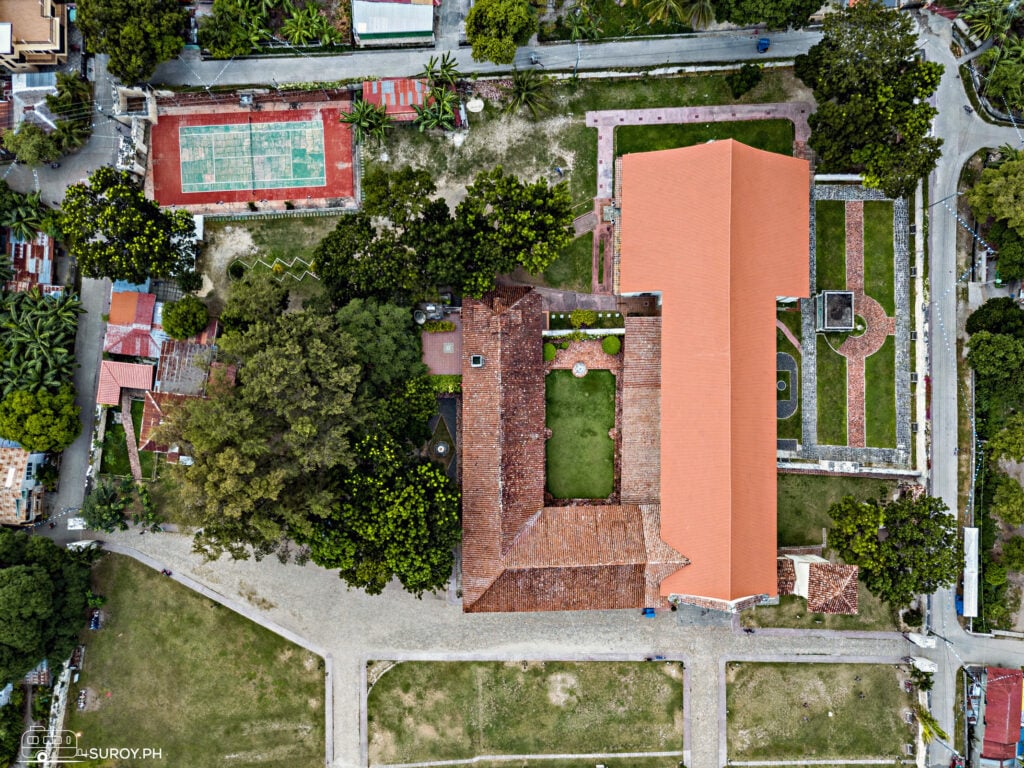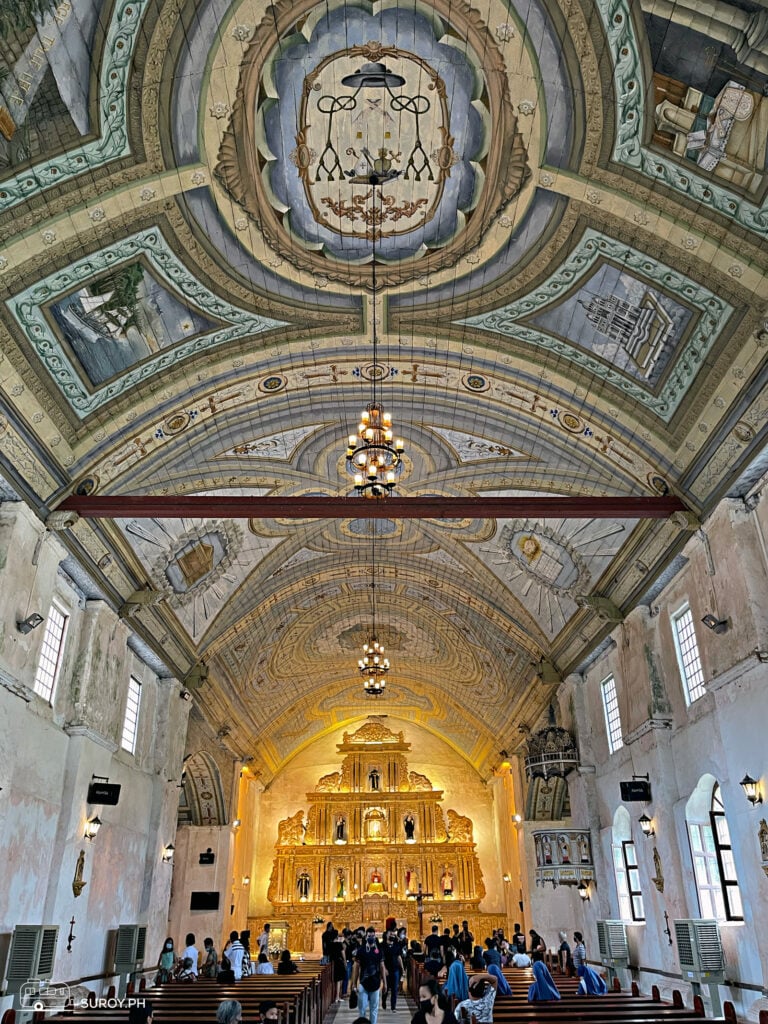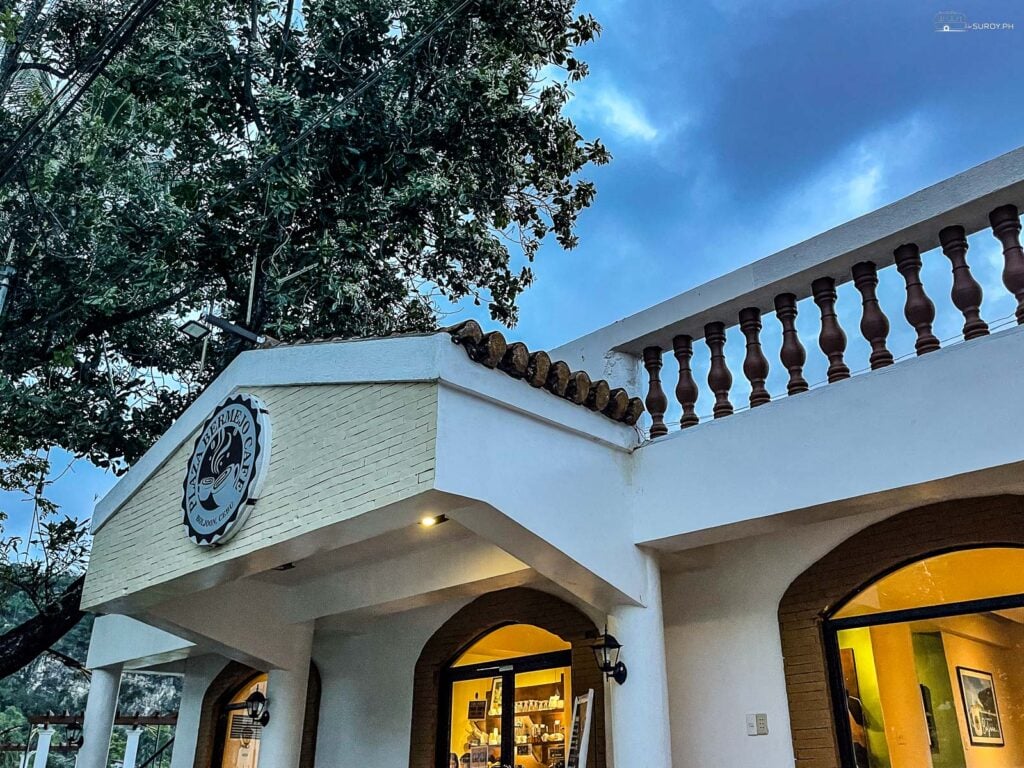The Patrocinio de Maria Church in Boljoon is tucked between rugged limestone cliffs and the blue waters of the Bohol Sea lies one of Cebu’s most treasured heritage sites. Also known as Boljoon Church, this centuries-old structure isn’t just a place of worship; it’s a living museum of faith, resilience, and Spanish-era architecture. A place where time slows down and stories live on in every coral stone.
It faces the sea towards Bohol, making it one of the coastal fortresses in the country. It has a 2-meter thick wall made of mortar and lime that served as a watchtower for Moro pirate raids. Its purpose is similar to the Cuartel Ruins in Oslob.
The watchtower El Gran Baluarte has seven bells that ring whenever an attack is incoming. The ground floor served as a prison cell, and the second floor was used to store weapons and ammunition. The church plaza (locally called Muraya) was believed to be a formal Spanish burial ground during the early Hispanic rule.



What Makes Boljoon Church Special?
A Brief History Rooted in Devotion
Founded in 1599 by the Augustinians, the Boljoon Church began as a humble visita of Carcar. It officially became a parish in 1690 under the patronage of Nuestra Señora del Patrocinio. Throughout its long history, the church changed hands between different religious orders, with the Augustinians and Jesuits leaving lasting imprints.
The current stone church, completed in the late 18th century, was built using coral stones and traditional Filipino-Spanish craftsmanship. Declared a National Historical Landmark and a National Cultural Treasure, Boljoon Church stands as one of the oldest remaining original stone churches in the country.
The church is now considered a future UNESCO World Heritage site because of its historical significance.

Architectural Beauty and Baroque Influence
The church’s facade is a beautiful blend of Baroque and Filipino colonial style — modest, yet grand in its simplicity. Step inside and you’ll find intricate carvings, wooden ceiling murals, and a centuries-old retablo adorned with saints, floral motifs, and gold leaf.
The church complex also houses a bell tower, convent, school, and even an archaeological dig site where ancient human remains and artifacts were discovered — proving Boljoon’s deep historical and cultural roots.


A Homecoming of Heritage: The Return of the Pulpit Panels
In March 2025, history was made again. The church welcomed back its original pulpit panels, long held in the care of the National Museum of the Philippines. These hand-carved panels, depicting religious figures, were reinstalled in a ceremonial homecoming attended by cultural advocates and community members.
Their return marks a significant restoration of Boljoon’s identity, bridging past and present through art, faith, and collective memory.
Read the full story of the pulpit panels’ return here.

Why You Should Visit Boljoon Church
Boljoon isn’t just a stopover — it’s a soulful destination. Here, you can:
- Walk the coral-stone paths of the church grounds
- Attend a local Mass and experience deep-rooted Filipino faith
- Capture stunning views of mountains hugging the coastline
- Feel the quiet power of history echoing through its halls
Whether you’re a pilgrim, a photographer, or a traveler in search of meaning, Boljoon offers something real and unforgettable.

Visitor Information
- Opening Hours: 6:00 AM – 6:00 PM daily
- Entrance Fee: Free, but donations are appreciated
- Location: Boljoon, South Cebu, Philippines
Nearby Attractions
Make the most of your South Cebu suroy with these nearby spots:
- Osmeña Peak – Cebu’s highest peak, known for its jagged landscape and sunrise views
- Tingko Beach – A serene white-sand stretch in nearby Alcoy
- Enchanted Mountain – A mystical escape in Dalaguete with panoramic vistas
- Carcar Lechon – Crispy, flavorful heritage lechon you shouldn’t miss
- Simala Church – The grand Marian shrine in Sibonga known for its castle-like design
- Eli Rock – A popular viewpoint in Boljoon offering sweeping views of the coastline and church below
- Oslob Whale Shark Watching – Experience a once-in-a-lifetime swim with gentle giants just a short drive away

How to Get to Boljoon Church
Boljoon Church is located in the town of Boljoon, approximately 103 kilometers south of Cebu City. It is around 3 hours away from Cebu City.
The most convenient way to reach the church is by private car or taxi. Those using public transportation can take a bus or van from Cebu City’s South Bus Terminal to Boljoon. The journey takes about 3 hours and offers scenic views of Cebu’s southern coastline.
Location Information
The church is located south of Cebu and is very near to many tourist spots, including Oslob, Dalaguete, and the waterfalls of Samboan.
Final Thoughts
Boljoon Church is more than a destination — it’s a story etched in stone, reclaimed through time, and told through generations. With the sea as its witness and the mountains as its guardians, this sacred space continues to inspire awe, reverence, and deep reflection.
As the original pulpit panels return to their rightful home, we are reminded that heritage is not only about preservation — it’s about remembering who we are and passing it on. It is in places like Boljoon where history becomes human, and where faith continues to rise with the morning sun over the sea.
So when you visit, don’t just take photos — take in the silence, the scent of old wood and candle wax, the soft echo of prayers whispered across centuries.
Tara, suroy ta sa Boljoon — where faith meets heritage, and the mountain kisses the sea.
For more unique travel guides, visit suroy.ph and follow us on Facebook, Instagram, and TikTok to uncover the best adventures the Philippines has to offer.
Share your experiences and photos with us using the hashtags #SuroyPH and #DiscoveryPH for a chance to be featured!

